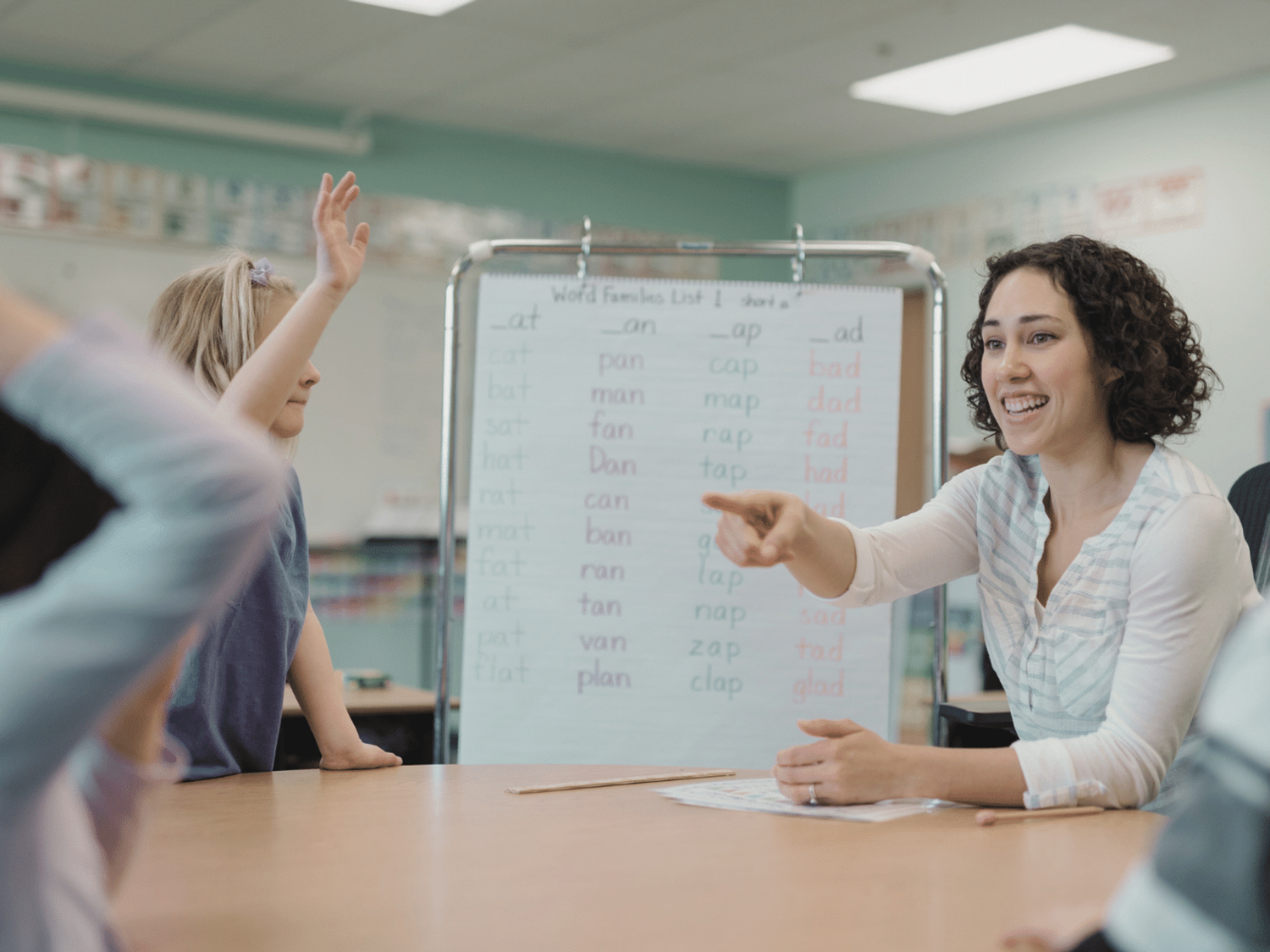Barak Rosenshine was a Psychology professor at the University of Illinois. He decided to examine teacher instruction to see how it can be improved through the help of psychology. In doing so, he identified the approaches and strategies that underpinned the most successful teachers’ practices. From this emerged Rosenshine’s 10 Key Principles of Instruction.
Why teachers are excited about Rosenshine's principles
According to educational consultant Tom Sherrington, Rosenshine’s principles provide ‘the best, most clear and comprehensive guide to evidence-informed teaching there is.’
Sherrington believes that the principles resonate with teachers of all subjects and contexts as they hone in on aspects of teaching which tend to be universal in nature - aspects such as questioning techniques, implementing opportunities for practice and knowledge building. He adds that the principles are an excellent way for educators to link their practice to solid evidence-based research.
Rosenshine’s Principles of Instruction are based on evidence from three sources.
- Cognitive science research, which focuses on how the brain takes in and uses new information. This was helpful in determining ways to overcome the limitations of working memory when attempting to learn new things.
- Direct observation of ‘master teachers’ whose students made the most academic leaps as measured by standardised tests. These observations focused on how these teachers presented new information to learners, how they monitored learners’ understanding, the opportunities they provided for rehearsal of information or skills and how they scaffolded the development of understanding and knowledge.
- Research on cognitive supports and scaffolds which looked at how models and instructional procedures were used to effectively help students understand complex concepts.
Design effective lesson plans
When thinking about designing effective lesson plans using Rosenshine’s Principles of Instruction, it is worth keeping in mind that his strategies may not be beneficial in certain learning situations or subject areas. The principles need to be considered in context for them to be successful and drive learning forward.
Furthermore, the principles should not be turned into a checklist to be ticked off, but rather used as a guide to aid professional learning. They are not intended to be a tool of accountability.
Effective lesson planning involves giving learners the opportunity to develop solid, accessible background knowledge. Background knowledge becomes readily accessible when learners have the chance to rehearse their knowledge and link it to previously acquired knowledge. There should be plenty of instructional support to help learners with knowledge acquisition, rehearsal and making connections with other knowledge.
Lessons should be planned to allow learners the chance to acquire new knowledge in easily digestible chunks. Within the planning, there should be time carved out to model concepts or processes learners are coming to terms with. Lots of time for practice and review should be built in, as well as guiding and helping students with errors and misconceptions. It is often more beneficial to plan for hands-on activities after some basic knowledge has been taught.
As a rule of thumb, Rosenshine (2012) gave a list of bullet points. To reiterate, these are not a checklist to be used prescriptively, but rather guidelines to be used at the discretion of the educator.
- Begin a lesson with a short review of any previous learning
- Present new material in small steps with practice after each step
- Ask lots of questions and engage with the responses
- Provide models
- Guide student practice
- Check for understanding
- Obtain a high rate of success
- Provide a scaffold for challenging tasks
- Have expectations of independent practice
- Engage learners in regular reviews
Teaching principles that can be used in all subjects
Rosenshine’s principles are not intended to be a ‘blanket’ description of all facets of teaching. They are more applicable to aspects of teaching where learning is teacher-led and instructional. At some stage, most teachers will have to do this to some degree.
In his book, Rosenshine’s Principles In Action, Sherrington streamlined Rosenshine’s 10 principles into four strands:
- Reviewing material: check that prior learning is being linked to new material where necessary and support learners in their recall of this.
- Questioning and checking for understanding - check that learners are making sense of the new material, identify misconceptions and adapt teaching as necessary.
- Sequencing concepts; modelling; scaffolding-using small steps to teach new material, demonstrating, and providing structured support.
- Stages of practice- guiding practice to secure a high rate of success, helping to develop fluency and confidence with the view to facilitating independent practice.
In conjunction with the Department for Education, Jess Mahdavi-Gladwell, chartered teacher, explored the application of Rosenshine’s principles in the teaching of primary Maths. She wrote how there has been a shift in primary teaching from focusing on accurate and speedy calculations to focusing on understanding concepts. For multiplication, while the written method is important, there is much emphasis put on multiplication as a concept which helps the learners with mental calculations. Added to this, it is very much tied in with learning about division, fractions and other concepts which can prove tricky.
Mahdavi-Gladwell begins with Rosenshine’s second principle, ‘Present new material in small steps with student practice after each step’. Many schools implement edtech solutions such as White Rose Maths, Power Maths [link to technology in the classroom] or other schemes to embed this kind of teaching in the classroom. Such schemes often provide a yearly overview as a suggested order of Maths areas to cover and the length of time to be spent on each area.
This coverage is usually broken down into small steps with suggested activities to support fluency and reasoning development. Using variations as part of the teaching process can also support teaching in small steps. This variation can be procedural or conceptual.
Conceptual variation is based on using a variety of representations for each concept. For example, in learning about fractions, finding fractions of amounts, fractions of different shapes and fractions of different objects would all be demonstrated and utilised to facilitate the learning.
Procedural variation is based on the idea of small-step learning wherein there is an understanding of relationships using logical and ordered calculations.
Mahdavi-Gladwell then goes on to discuss principle 4, ‘Provide models’. This could be a fraction wall being used alongside a number line where unit fractions are accurately marked on the number line. The teacher would demonstrate how to complete the first part of the task using the interactive white board before letting the children go on to work independently or with a partner. This type of model is helpful as children can see how a larger denominator denotes a smaller fraction.
Mahdavi-Gladwell moves on to principle 6, ‘Check for student understanding’. In common practice, this is often known as Assessment for Learning and can include strategies such as answers on a mini whiteboard or ‘think, pair, share’ in partners. Having expectations of a response from all (or most) learners reduces the chances of children opting out of responding and thus increases the chances of them staying engaged.
Principle 8 is then put forward by Mahdavi-Gladwell, ‘Provide scaffolds for difficult tasks’. As part of guided practice, the teacher gives the learners temporary scaffolds to assist. For example, when first learning about the mathematical concept of addition, children would start by looking at concrete examples (so they would actually have the objects to be added). This could move on to drawing images to be added which then moves on to completing an abstract calculation.
Identify lesson activities for learning and engaging
Many educators, in all likelihood, already use a lot of what Rosenshine promotes, whether they realise it or not. By looking at Rosenshine’s Principles of Instruction and the research that supports them, you can identify ways to streamline your practice, tailoring your teaching even more to the needs of your learners.
Below are a few ideas for lesson activities for learning and engaging based on Rosenshine’s principles.
Principle 1: Begin with a short review of learning
- Mini quizzes
- Write five things you learned about…
- Match definitions to vocabulary learned in the previous lesson
- Address errors from the previous lesson-either verbally or as short AFL tasks in learners’ books
Principle 2: Present new material in small steps with student practice after each step
- Look closely at examples of the piece of writing or product you are expecting learners to produce
- Use completion tasks where learners finish worked examples that are partially completed
- Less is more! Avoid presenting learners with too much information per slide as this can overwhelm them and hinder learning
Principle 3: Ask questions and check responses
- Write questions on students’ work for them to answer in the following lesson
- Give learners example responses to a given question
- Get learners to ‘be the teacher’ by writing down questions they have about the response
- Paired work - one of the pair read out an answer then the other learner will respond with a question or alternatively, a reason why they disagree
Principle 4: Provide models
- Show an example from another learner using a visualiser or a photocopy
- Class paragraphs where the teacher types as learners direct and lead what to write
- Show learners a piece of work that needs to be fixed and they can improve it
Principle 5: Guided student practice
- Use scaffolded tasks that allow learners to practise skills in a clear and structured way
- Build in time to reflect and improve their own work based on teacher marking
Principle 6: Checking for understanding
- Do ‘mini plenaries’ throughout the lesson
- Get learners to do a brief task to demonstrate understanding and engagement
Principle 7: Obtain a high success rate
- Award ‘expert badges’ where learners who have mastered something can go around and help others with that particular aspect
Principle 8: Scaffolds
- Provide a clear set of guidelines for each stage of writing as they master a text type
- Provide sentence starters
- Teacher marks a piece of a learner’s work using symbols and then learners must add the comments they think the teacher intended. This makes your students think more deeply about the work they have produced
Principle 9: Require and monitor independent practice
- Provide models and scaffolds that are relevant to the task you want learners to complete to help foster independence
- Repeat processes within activities; for example, when practising grammar, allow students to practise the same skills but using different content
Principle 10: Engage students in weekly and monthly review
- Take time to review previous assessments before moving on to new ones
- Allow learners to create quizzes, board games and posters based on their learning
- Use peer questioning
Many of these activities overlap and support each other. Many activities can even be used across the various principles. This is because Rosenshine’s principles often work in harmony to help embed skills and foster success.
Discover Bedrock Learning
Sign up for our free trial to discover how Bedrock can help improve your student's literacy needs.
Improve engagement and focus using questions
According to Rosenshine’s third principle, questioning is one of the teacher’s most powerful tools. Questioning helps learners practise new information and make connections between new material and prior learning. Research by Good and Grouws (1979) found that when teachers used lots of questions after instructional teaching, learners performed better academically than those who were asked fewer questions. Questions give an educator the opportunity to determine how well new material has been learned. It also indicates if a student needs additional instruction. According to Rosenshine, “The most effective teachers also ask students to explain the process they used to answer the question, to explain how the answer was found.”
Using pre-questions before you teach learners new material has been proven to help them recall nearly 50% more than learners who aren’t asked these questions.
When applying this principle to the classroom, it is also worth considering wait times. When learners are given enough time, they are more likely to be able to retrieve the answer from their long-term memory.
Rosenshine has suggested question structures to facilitate classroom questioning. A few of these include:
- What is the main idea of…?
- What are the strengths and weaknesses of…?
- What do you still not understand about…?
Identify students who need extra support (Principles 6 & 10)
According to Principle 6, more effective teachers made frequent checks to see if all students were learning the new material. These checks not only alerted teachers to developing misconceptions but also provided the processing needed to move new learning into long-term memory. This can be done by asking learners to make a presentation, summarise information or share their opinion of something.
We all construct knowledge as we learn and use what we have learned. Our understanding of new material becomes connected to our existing ‘schema’, and we then construct the ‘gist’ of what we have learned. When questions are not part of this teaching and learning process, many learners make errors in the process of constructing this mental ‘gist’, or summary.
Rosenshine’s 10th Principle is an elaboration of his first principle. It puts emphasis on the importance of regular reviews of newly acquired material.
According to Rosenshine, this tenth principle is effective as it allows learners to space out their revision at regular intervals until they have mastered a new skill. Extensive practice of a skill allows for the development of well-connected networks of ideas in long-term memory. The more a skill is rehearsed, the stronger the interconnections become between new knowledge and prior knowledge.
Asking questions, using flashcards and doing weekly and monthly quizzes are all ways of reviewing learning in the classroom.
Teaching for mastery
Rosenshine put forward that the optimal success rate a teacher should aim for in their classroom is 80%. A success rate of 80% indicates that learners are understanding the material and learning is taking place. It also shows that learners are being suitably challenged. Furthermore, obtaining a high success rate leads to increased feelings of confidence among all learners, which serves to boost motivation and morale for future tasks.
Achieving a success rate of 80% is reliant on teachers observing and regularly assessing students’ knowledge and understanding to determine if lesson plans need to be changed in any way.
If learners aren’t meeting the high expectations set, then it might be worth thinking about re-modelling or re-teaching information to plug gaps and address misconceptions.
Teachers most effective in achieving this level of success also taught material in small steps and asked lots of questions throughout lessons.
Scaffolding difficult tasks (Principle 8)
Rosenshine’s eighth principle is based on providing learners with temporary support and scaffolds. A scaffold is a temporary means of support that is used to assist learners with new or difficult tasks. As the student increases in competence and confidence, the scaffold can gradually be removed. It is a form of guided practice.
This process of supporting learners with difficult tasks through scaffolding has been named “cognitive apprenticeship”. Students learn strategies during this apprenticeship which allows them to become competent in the skill being taught.
In the classroom scaffolding may take the form of question prompts during reading comprehension. Another form of scaffolding in the classroom is the teacher thinking aloud. This allows learners to see the thought process the teacher goes through to carry out a task or reach a conclusion. Cue cards and checklists are also effective scaffolding tools used.
Build confidence in independent learning (Principles 5 & 9)
Rosenshine’s fifth principle is based on building confidence in independent learning. This is done through guided practice. Rosenshine believed that students could not merely be presented with new material. Without sufficient rehearsal, this material may be forgotten. Information processing research has found that learners need the opportunity to develop their understanding in a supportive environment. This may take place through summarising, rephrasing, evaluating and elaborating. With the sufficient opportunity for rehearsal, learners are more likely to retrieve this information and make use of it to solve problems or help with new learning.
In one study, Rosenshine found that more successful teachers spent more time presenting new material and guiding practice than less successful teachers. Successful teachers provided fuller explanations, gave lots of examples, checked for learners’ understanding and provided clear instruction. Time was also dedicated to learners doing examples on the board with teacher guidance. Those teachers who gave more time to guided practice tended to have learners who were more engaged when working independently.
This leads to Rosenshine’s ninth principle - independent practice. He found that learners need rigorous, extensive independent practice for knowledge and skills to become embedded.
Typically, guided practice is followed by independent practice. This is necessary for fluency and quick recall. When the material is overlearned, it can be retrieved automatically and requires no space in working memory. When a skill or piece of knowledge becomes automatic, learners can focus more attention on comprehension and application.
Rosenshine found that more successful teachers provided extensive opportunities for independent practice. This practice should involve the same material that was used in guided practice so that learners are already equipped to complete it. Learners should be fully prepared for their independent practice in order to get the most out of it.
Conclusion
Rosenshine’s Principles of Instruction are based on three sources of research which support their efficacy. They help improve teacher performance by applying the most effective strategies of teaching when the main objective is to master a skill or a piece of knowledge.
It is important to remember that these strategies may not be useful in every learning situation. It is up to the educator to decide if the strategies are useful to the given learning situation and environment. However, the strong research behind Rosenshine’s principles suggests that not only do they have great benefits in the classroom, but many natural teachers already default to his methods without knowing - this shows that teachers intuitively resort to his principles when giving learners the best education. When implementing Rosenshine’s principles explicitly, teaching can only improve.





